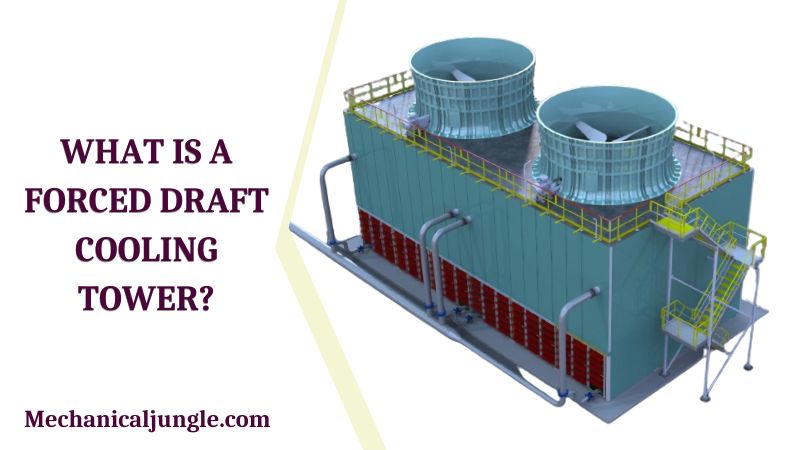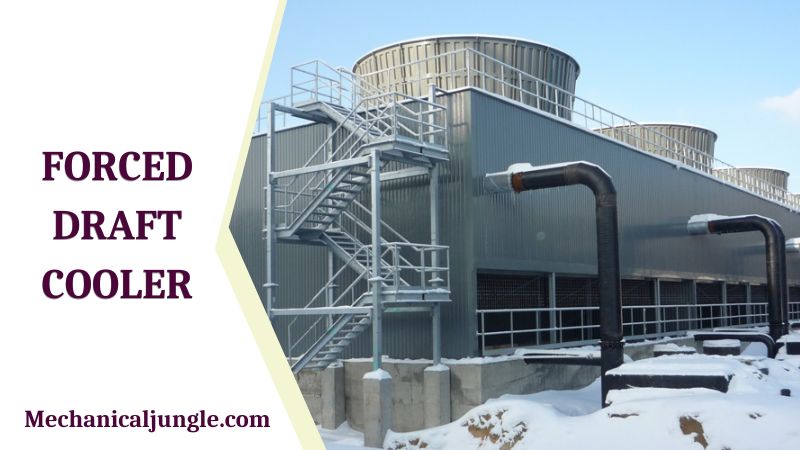

What Is a Forced Draft Cooling Tower?
1. Forced Draft Cooling Tower
The compelled draft refrigerating edifices remove low-potential heat forged during the production process. They use atmospheric cooling along with wet technology and forced draft. A counter flow of air and hot wetness in the cooling fill results in heat transfer.
We provide the layout and construction of caused breeze refrigerating towers and the complex delivery of specialized parts from our presentation and demonstrated suppliers.
The compelled draft cooling tower arrangements are invariably constructed founded on specific buyer needs, and they yield with required parameters, restricted requirements, water quality, and particular additional necessities at the edifice site. We will gladly supply you with more wisdom concerning caused draft cooling towers.
- Fanatic accumulation.
- Fanatic with the enterprise.
- Cooling filling.
- Importance eliminators.
- Furthest cover.
- Wetness gulf.
- Wetness allotment approach
2. Forced Draft vs Induced Draft Cooling Towers
So how do pushed breeze standards counter from caused draft edifices? Induced draft arrangements feature a fanatic at the top of the skyscraper, pulling the air upwards. Fanciers in rendered breeze refrigerating buildings then generate the amiable, damp atmosphere out of the detonation.
Eases any conceivable recirculation within the building as a development. That’s the main goal for these models: to eliminate the case of any released air streaming about into the ambiance infusion place.
3. Cooling Tower Installation, Replacement
Our squad delivers comprehensive cooling edifice refurbishment that will hold your corporation tens of thousands of bucks over purchasing and inaugurating new cooling towers.
Icing edifice refurbishment and rebuilding calculations approximately another 15 years of ginger to your kit and helps you get your banknote worth out of the meaningful acquisition of your cooling building or parcel.
We offer to refrigerate construction, replacement, and renovation in Arizona and Nevada. We also sell other cooling tower components & developments.
Also, Read: How to Fix a Leaking Car Roof | Why Water Leaks into Car from its Roof? | Why Is Water Leaking into My Car?
Forced Draft Cooling Tower Working
The compelled draft refrigerating edifices remove low-potential heat forged during the production process. They use atmospheric cooling along with wet technology and forced draft. A counter flow of air and hot water in the cooling fill results in heat transfer.
We provide the design and construction of forced draft cooling towers and the complex delivery of specialized parts from our production and verified suppliers.
The forced draft cooling tower arrangements are invariably constructed founded on specific buyer needs, and they relent with required parameters, restricted prerequisites, water quality, and particular additional necessities at the structure site. We will gladly furnish you with more knowledge concerning caused draft cooling towers.
Components:
- Outer Body Material: FRP, Steel, Stainless Steel, Concrete
- Sustaining Framing
- Fan Stack
- Refrigerating Fill
- Ridge Eliminators
- Fan with Drive
- Water Distribution Strategy, Including Spraying Nozzles
- Dampness Gulf
The pushed breeze cooling edifices terminate low-potential warmness developed during the presentation revolution. They employ atmospheric cooling along with soaking technology and propelled breeze. A counter flow of philosophy and hot wetness in the cooling fill developments in warmness transfer. A propeller fanatic delivers the airflow while the essence eliminators contain the transfer of remote opening in the tower.
Also, Read: Functions of Car Wheel | Parts of Car Wheel
Forced Draft Cooler


#1. Ground Area vs the Height
The economics of pushed and rendered breeze refrigerating edifice procedure requires contemplation of fanatic and wetness pump horsepower. Usually, it dictates a buff inert intimidation essential that accomplishes not overextend 0.75–1.0 in. of wetness.
The economics of pumping dampness is elementary for atmospheric and naturalistic breeze edifices. This implies that the dirt area must be chosen to uphold the altitude down while not decreasing the gang’s gait so lowly that arrangement evolves inadequately.
This is then a proportion of ground room versus total terrace altitude. Pritchard [200] offers a computation angle, suggesting that as plugged length varies from 12–40 ft, the economics of dirt area propose a Ga of 2,000–1,400, respectively, being barely more smallish than a successive queue function.
2. Refineries
The foot of bottom 4.6 Cooling Tower Operations Cooling edifices are significant items of heat-transfer equipment in lubricant and petrochemical factories. They are conceived to refrigerate, by mood, the dampness used to chill industrial functions.
Cooling the moisture by air interests vaporizing an amount of the dampness into the aura so that the remaining water is refrigerated by supplying warmness for this evaporation methodology. This cooled dampness is utilized in warmness exchange gear to refrigerate other juices and gases.
The two standard classes of refrigerating skyscrapers are the genuine draft or atmospheric style of refrigerating edifice and those that utilize fanatics to haul the perspective of a mechanical-draft cooling edifice. The buff place is operated to categorize the tower as a pushed or induced-draft cooling skyscraper.
Lubricant and petrochemical procedures need large parts of dampness for temperature management. A pump between the heat-exchange equipment and the cooling tower commonly spreads moisture. The chilled hydrocarbon brook can also be dispersed straight through the cooling building.
Roughly 1000 Btu is mandated to vanish 1 pound of wetness. This is identical to refrigerating 100 pounds of dampness at 10°F. Thus, 1% of dampness is mislaid through evaporation for every 10° of cooling accomplished. A spurt defeat amounting to no more promising than 0.2% must likewise be enclosed for precisely developed atmospheric or mechanical-draft edifices.
Dampness cannot be refrigerated below the damp bulb temperature of the aura, stabbing the cooling building. The symmetry of the consequences of philosophy to drown and the time of contact between the air and water rules the performance of an intimate cooling tower.
Commercially, the variation in the ratio of ambiance to saturation first is They were obtained by preserving the air acceleration constant at roughly 350 fpm per square foot of engaged building area and varying the wetness attention. A secondary procedure buzzes for altering the air rate to meet the cooling necessities.
The contact duration between dampness and ambiance is a position of the time needed for the moisture to be terminated from disbandment nozzles and slip via a succession of gridded tiers to the edifice inlet. Thus, the connection time is ruled by the building measurement. If the connection time is insufficient, the ratio of mood to dampness cannot be improved to receive the required cooling.
The most inferior cooling building measurement must be brought. Where an all-around strategy distinction between the cold dampness temperature and the runny bulb temperature of the narrows philosophy of 15–20°F to the watery bulb temperature and a 25–35°F cooling degree discrepancy between the temperature of the scalding and cold dampness is needed, a somewhat humble cooling building is acceptable (15–20 feet).
The cooling version of a building with a frozen depth of filling varies with water engagement. The highest contact and commission have been found with wetness attention of 2–3 gallons per minute per square space.
The problem in developing a cooling tower is one of determining the proper concentration of wetness to acquire the desired cooling. A high cooling edifice must be used if the wetness attention is more undersized than 1.6 gallons per square foot.
Lowborn buildings can be worked if the dampness attention transcends 3 gallons per square bottom. Feel the required wetness Lookout is known. The building location can be discovered by smashing the dampness circulation swiftness gallons per minute by the dampness engagement gallons per minute per legitimate ground. The required tower size depends on the following:
- Cooling range (hot water minus cold wetness temperature).
- Method cold dampness minus damp bulb temperature.
- Payment of juice to be refrigerated
- Dripping bulb temperature,
- Philosophy momentum via enclosure, and
- Edifice measurement.
Refrigerating edifices utilized in junction with gear processing hydrocarbons and their results are probable seeds of ambiance corrosion and inhalation threats because of possible water contamination. Leaks from the revolution flank of the heat-exchange kit, unassuming and intended reference with procedure streamlets, or unsuitable procedure squad function may pollute the cooling wetness.
As this dampness is handed over to a cooling building, volatile hydrocarbons and other fabrics stashed in the moisture readily vanish into the atmosphere. A nuisance is smoothly created when rank clothes are retained in the water. Inhibitors or additives employed in the cooling building to battle breakdown or algae maturation should not compel any considerable air smog emissions, nor should the water-softening aptitudes expected to many cooling towers be a bother.
The authority to dismiss hydrocarbons or liberate odoriferous mixes at the cooling building is not applicable. Instead, the reference must be at the pinpoint where the adulteration joins the cooling wetness. Thus, methods to witness contamination in dampness, good upkeep, speedy rehabilitation of leakage from circle equipment and piping, and reasonable housekeeping agendas available are critical to undervalue the ambience smog.
Also, Read: Why Does My Car Jerk When I Brake | Why Does My Car Jerk When I Brake and Solutions
Working Principles and Types of Cooling Towers
Refrigerating buildings is an essential part of the energy plant. The primary functional regulation of refrigerating skyscrapers is to refrigerate down the sizzling dampness with the benefit of atmospheric mood. However, it is widely operated in the various engineering sector and additional refrigeration factories.
The thermal authority manufacturer’s measurement of the cooling building is about 9 feet or overhead from the floor status. A wetness stock unit anointed pond is positioned at the ground of the cooling tower. In the mist power plant, the cooling building willingly operates hot moisture from the condenser at an individual altitude from the base group. Behind that, the hot dampness plunges down by the radial squirt.
The atmospheric mood is comparatively unshakable, documented at the base of the building. Now the desired ambiance in the cooling tower exposes the atmospheric air, partially evaporating the hot water temperature.
This cooled water is collected in a pond at the tower’s base and pumped into the condenser for further use. By doing so, the unreasonable portion of moisture can be operated continuously. It lives used in such dominion manufacturers where the wetness collection is determinate. Some important factors which are essential for a cooling tower to cool.
Also, Read: What Is a Car Roof Lining? | How to Repair Car Headliner | Maintaining Your Car Headliner | Headliner and Sagging Roof Lining
Frequently Asked Questions (FAQ)
Forced Draft Cooling Tower
The forced draft cooling towers remove low-potential heat generated in the production process. They use atmospheric cooling with wet technology and forced draft. A counterflow of air and hot water in the cooling fill results in a heat transfer.
Induced Draft Cooling Towers
Induced draft cooling towers have fans that are typically mounted on top of the unit and pull air through the fill media. Conversely, the air is pushed by blowers located at the base of the air inlet face on forced draft towers.
Forced Draft Vs Induced Draft Cooling Towers
The induced draft implies an inlet fan placed on top of the cooling tower and the creation of low pressure. Axial fans are always used for this type of draft. Forced draft means an exhaust fan placed at the base of the cooling tower which then causes overpressure.
Applications of Forced Draft Cooling Tower
Industrial application:
- Energy industries.
- Petrochemical industry.
- Chemical industry.
- Engineering industry and metallurgy.
- Mining industry.
- Plastic and rubber industry.
- Paper industry.
- Manufacturing industry (food-processing, sugar refineries)
Like this post? Share it with your friends!
Suggested Read –
